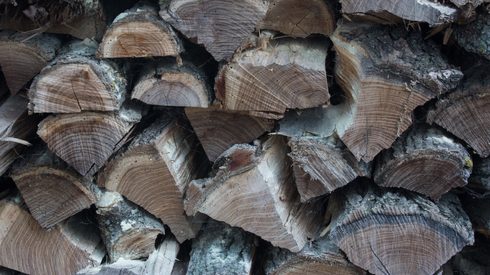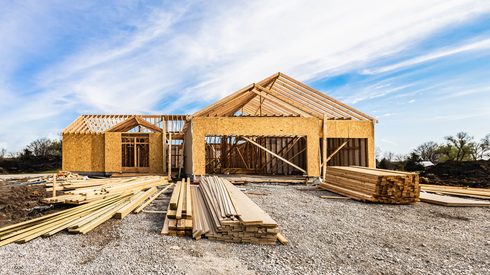The US will become a net exporter of softwood lumber in overseas trade and overtake Canada as North America’s leading offshore supplier within the next five years as production capacity increases, according to Fastmarkets’ latest forecast.
Projections from Fastmarkets’ North American Lumber Forecast Five-Year Outlook released in late June show US exports to overseas destinations increasing steadily, from 1.11 billion board feet (bbf) this year to 2.7 bbf by 2027 (chart).
Canadian exports to destinations other than the US are projected to fluctuate more moderately in both directions between 2023 and 2027. The forecast calls for Canadian exports to hover in a 1.78 to 1.82 bbf range from 2024 through 2026 before rising to 1.86 bbf in 2027.
North American imports from offshore suppliers, meanwhile, are forecast to peak at 2.66 bbf this year, up from a historically high 2.58 bbf in 2022. But in 2027, imports are forecast to plunge to 1.37 bbf.
The US hasn’t been a net softwood lumber exporter since 2016
Historically, the vast majority of North American imports from offshore are shipped to the US and the forecast indicates that trend will hold true over the next five years.
The US was last a net exporter in offshore softwood lumber trade from 2009 through about 2016, when domestic market conditions were weak.
Fastmarkets’ forecast predicts that the South will lead a surge in US exports. Production capacity has expanded significantly in the South in recent years and more facilities are expected to come online.The forecast cited demographic fundamentals as the primary driver slowing growth in North American lumber demand, especially in 2026, 2027 and beyond. As a result, mills in the South will look offshore for outlets to sell rising production.
Regarding imports, Fastmarkets anticipates an aggressive correction in European shipments to the US amid reshuffling of global trade caused by European sanctions on Russian and Belarussian lumber. Further, supplies in Central Europe should continue to tighten in coming years as the impact of a massive beetle infestation runs its course.
A few longtime Southern Pine (SYP) exporters noted that a shift toward the US becoming a net exporter over the next five years would surprise them. They argue that treaters in the South appear to be gearing up to purchase more bright stock from suppliers in South America and Europe.
Further, European Spruce has gained a strong foothold in portions of the US market and are likely to maintain a prominent presence in the years ahead, some note.
Southern Pine exporters see potential for global expansion
Nonetheless, Southern Pine exporters have demonstrated at least measured potential for expansion in global markets in recent years. Historically, the Caribbean is the largest and most consistent market for US imports. Almost all shipments from the US into that region are Southern Pine.
The pandemic disrupted Caribbean demand by undermining tourism. But SYP exports to the Caribbean could grow in coming years if the tourism industry continues to recover. Shipments through May increased 8% compared to 2022.
Traditional European markets for Southern Pine harbor little potential for growth. Exporters note that most European destinations have become niche markets in recent years, a trend that is unlikely to change. However, some exporters hope to expand sales into neighboring regions such as North Africa and parts of the Middle East.
Trade associations such as the Softwood Export Council and Southern Pine Export Council continue to invest time and resources into marketing Southern Pine in those regions.
India represents another market Southern Pine exporters will monitor in the years ahead. For decades, industry observers have noted that India has the potential for massive growth as an import destination. Traders point to its rapidly expanding middle class, rising disposable income, and huge population base as potential demand drivers.
SYP #2 2×10 and lower grades are the most consistent sellers in India. But that market has yet to become a staple destination some traders had anticipated since the early 2000s. A surge in shipments one year tends to be followed by a steep decline the next. Traders note that the market in India is extremely price sensitive. Myriad other challenges have hampered trading.
Southern Pine exports to China peaked in 2017 at 175 million board feet but faded steadily over the next five years. Prospects in that market through 2027 are difficult to gauge, given constant competition from Europe, Russia, and other suppliers.
How long the Ukraine war continues is a wildcard that could significantly alter softwood lumber trade trends worldwide.
Want to learn more about the lumber market, prices, or forecasts? Check out our dedicated page for timber/lumber, other wood products, or speak to our team about accessing our news, analysis, forecasts and more.





